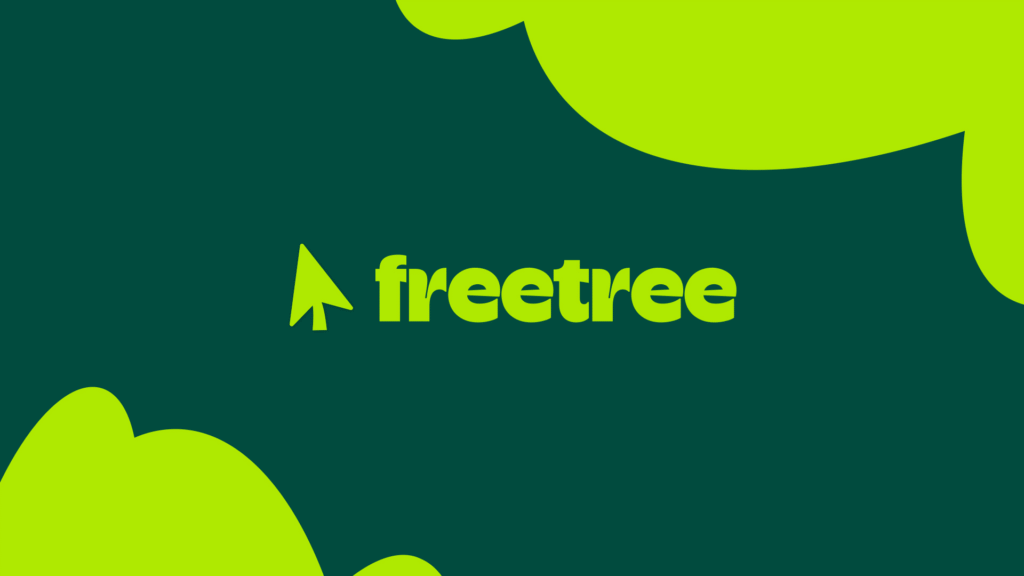
In a world flooded with online purchases and digital interactions, Freetree is proving that even the smallest actions—like clicking “buy now”—can contribute to something far greater. Reimagined by international branding agency How&How, with studios in Lisbon and London, Freetree has emerged from beta mode with a whimsical yet powerful new identity: one that encourages users to shop with a sense of purpose, not just pleasure.
The central idea is refreshingly simple: what if every online purchase could lead to planting a tree? What if, instead of consumer guilt, buyers could feel a rush of fuzzy, leafy joy? Freetree makes this possible by embedding itself as a browser extension, working seamlessly with over 40,000 global brands—from grocery retailers like Lidl to fashion giants like H&M. It plants trees every time you complete a purchase through its platform. The cost to the user? Absolutely nothing.
But the impact? Quite real, quite green, and—thanks to this clever rebrand—quite fuzzy.
Shopping with a Side of Sustainability
Freetree functions a bit like magic: without changing your habits or wallet, you help reforest areas that need it most. Powered by Ecosia, a well-known search engine that plants trees using advertising revenue, Freetree extends that mission to the e-commerce space. Together, they are taking on barren landscapes and transforming them into thriving ecosystems—all while the average shopper browses for sneakers or toilet paper.
But here’s where the magic deepens: it’s not just about trees. It’s about flipping the script on how we emotionally engage with online consumerism. Rather than treating shopping as a hollow transaction, Freetree reframes it as a small but meaningful environmental contribution. Each purchase plants a tree. Each click causes leaves to unfurl. Suddenly, the dull act of consumption feels joyful, tactile, and connected to something living.
“Unleashing Fuzz”: The Design Language of Growth
How&How didn’t simply slap a logo on the project and call it a day. They immersed themselves in the brand’s vision, crafting a visual identity rooted in a single delightful concept: “unleashing fuzz.”
That fuzz isn’t just metaphorical. It’s literal. Trees, leaves, bouncing branches, and expressive greenery animate the brand’s core. Smooth, wobbly illustrations give life to a family of personified plants, designed to grow and sprout with every user interaction. These aren’t your typical stoic sustainability graphics. They are playful, curious, and deliberately charming.
The new Freetree logo is a fusion of the brand’s two most essential ideas: a cursor and a pine tree. It’s minimal and clever—a green pointer that nods to both digital behavior and nature’s resilience. The result is an identity that feels alive, never static, always growing.
The accompanying typeface, Champ by Typeverything, reinforces this playful vitality. It’s a font with personality—rounded, springy, and full of quirky inktraps that mirror the organic, slightly chaotic beauty of a forest. It’s typography that breathes, dances, and invites the user to feel something beyond just utility.
From Pixels to Planting
What makes the Freetree story even more remarkable is the genuine ethos behind the branding effort. How&How, recognizing the environmental stakes and the value of the mission, opted not to receive a traditional fee for the project. Instead, they asked to be “paid in trees.”
That decision led to the planting of 60,000 trees, thanks directly to the design work itself—a rare case where creativity not only communicates a message but directly contributes to the cause it champions.
It’s a refreshing example of agency and client aligned around more than just profit. In this case, they shared a mutual belief: that doing good should feel good, look good, and grow something real.
A Brand That Clicks
Freetree’s identity stands out in a space too often dominated by sterile greenwashing or minimalist, eco-flavored sameness. Its cheerful visuals and accessible tone offer a new take on environmental action—one rooted in fun, positivity, and inclusion.
This isn’t a brand that guilts you into change. It invites you in. It waves at you with leafy hands, winks with illustrated eyes, and says, “Hey, want to make a difference today—just by doing what you were already going to do?”
And this is perhaps the most powerful part of the Freetree experience. It normalizes environmental contribution, making it effortless, habitual, and rewarding. Every click becomes a small act of regeneration, every online haul a nudge toward reforestation.
Growing the Future, One Tree at a Time
Freetree proves that doing good doesn’t need to be hard—or boring. It shows that design, when driven by a sincere purpose and a little creativity, can do more than just sell a product. It can plant hope. It can grow forests. It can transform the user journey from something transactional into something transformational.
As the extension continues to expand its reach, working quietly in the background of our everyday shopping lives, it also asks a big question: What if all of our digital tools had environmental benefits built in?
Until then, Freetree clicks gently in our browsers, sprouting leaves with every purchase, and reminding us that small actions, when rooted in good design, can truly make the world a greener place.

